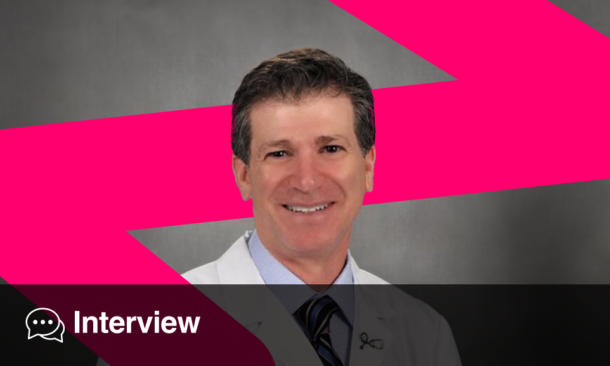Literature predicts 80% probability of mortality benefit
Late Breaking Trials III: Devices and interventions
Seville, Spain – 25 May 2015: The gene therapy SDF-1 remodelled the hearts of high risk heart failure patients in the phase II STOP-HF trial, principal investigator Dr Marc Penn announced today in a late breaking trials session at Heart Failure 2015. Dr Penn, a cardiologist at Summa Cardiovascular Institute in Akron, Ohio, US, stated that based on the literature the degree of heart remodelling induced by SDF-1 over-expression should give a greater than 80% chance of mortality benefit in future trials.
Heart Failure 2015 is the main annual meeting of the Heart Failure Association (HFA) of the European Society of Cardiology (ESC). The scientific programme is here.
Dr Penn said: “Molecularly, it makes sense to treat chronic heart failure patients with SDF-1 over-expression. Our body naturally expresses SDF-1 after injury but it doesn’t do so for long enough. At least 14 days of expression is needed to drive the recruitment of enough stem cells to start inducing tissue repair.”
Dr Penn previously showed that plasmid stromal cell-derived factor-1 (SDF-1) recruits the body’s own stem cells at sites of injured tissue.1 In a phase I study SDF-1 improved symptoms in heart failure patients.2 SDF-1 recruits bone marrow derived stem cells to the site of tissue injury to grow new blood vessels; recruits cardiac stem cells to possibly regenerate and improve heart function; blocks cell death; and remodels scar.3
STOP-HF was a phase II, double blind, randomised, placebo controlled trial that evaluated the safety and efficacy of SDF-1 in patients with ischaemic heart failure. The study included 93 patients with ischaemic heart failure who had a left ventricular ejection fraction (LVEF) of 40% or lower and were symptomatic, as indicated by a Minnesota Living with Heart Failure Questionnaire score of 20 points or more (higher being worse) and a 6 minute walk distance of 400 metres or less. Patients were randomised 1:1:1 to receive a single treatment of 15mg or 30mg SDF-1 or placebo and were followed for 12 months. SDF-1 was delivered to the heart as 15 injections using an endocardial injection catheter inserted through the groin. The location of injections was determined by echocardiogram.
The primary endpoint of the trial was a composite score of 6 minute walk distance and quality of life questionnaire. The composite endpoint was significantly increased in both the control and treated cohorts. As a result the trial did not achieve statistical significance on the primary endpoint.
In the entire population, patients treated with SDF-1 trended to an improvement in LVEF and LV end systolic volume (LVESV) although the results were not significant. In a prespecified analysis of the effect of the drug based on heart function at trial entry, patients with the worst heart failure (LVEF less than 26%) given 30 mg SDF-1 had a 7% increase in LVEF compared to a 4% decrease in the placebo group (p<0.01) at 12 months. They also trended towards a 18.5 ml decrease in LVESV compared to a 15 ml increase with placebo (p=0.10). There were no serious adverse events due to the drug JVS-100 in this trial.4
Dr Penn said: “We found that high risk patients, particularly those patients with weaker hearts, had more significant remodelling of their hearts with improvement in the squeeze (ejection fraction) and decrease in the size of the heart. These improvements in LVEF and LVESV are 80% likely to result in a 2 year reduction in mortality of 20%, based on probability estimates developed from multiple clinical trials.”5
Based on the analysis of this subpopulation, Dr Penn noted that it was possible that the study would have reached statistical significance if enrolment had been limited to high risk patients given the 30 mg dose of SDF-1. “The phase II STOP-HF 2 trial is under review by the FDA,” he said. “It will focus on high risk heart failure patients who will receive a 30 mg dose of SDF-1, followed by a second 30 mg dose 6 months later.”
He concluded: “We think in the future SDF-1 may be used in the prevention of heart failure as well as the treatment of existing heart failure. We need to understand exactly where the peak clinical benefit of SDF-1 will be. Based on animal studies it may be that we can prevent less sick heart failure patients from progressing to class III. The prototypical trial for this effect was the SOLVD Prevention Trial which showed that ACE inhibitors prevent progression to heart failure.”6
ENDS
Notes to editor
References and notes
1. Askari AT, Unzek S, Popovic ZB, Goldman CK, Forudi F, Kiedrowski M, Rovner A, Ellis SG, Thomas JD, DiCorleto PE, Topol EJ, Penn MS. Effect of stromal-cell-derived factor 1 on stem-cell homing and tissue regeneration in ischaemic cardiomyopathy. Lancet. 2003 Aug 30;362(9385):697-703.
2. Penn MS, Mendelsohn FO, Schaer GL, Sherman W, Farr M, Pastore J, Rouy D, Clemens R, Aras R, Losordo DW. An open-label dose escalation study to evaluate the safety of administration of nonviral stromal cell-derived factor-1 plasmid to treat symptomatic ischemic heart failure. Circ Res. 2013 Mar 1;112(5):816-825. doi: 10.1161/CIRCRESAHA.111.300440. Epub 2013 Feb 21.
3. Sundararaman S, Miller TJ, Pastore JM, Kiedrowski M, Aras R, Penn MS. Plasmid-based transient human stromal cell-derived factor-1 gene transfer improves cardiac function in chronic heart failure. Gene Ther. 2011 Sep;18(9):867-873. doi: 10.1038/gt.2011.18. Epub 2011 Apr 7.
4. JVS-100 is a non-viral gene therapy which encodes for SDF-1.
5. Kramer DG, Trikalinos TA, Kent DM, Antonopoulos GV, Konstam MA, Udelson JE. Quantitative evaluation of drug or device effects on ventricular remodeling as predictors of therapeutic effects on mortality in patients with heart failure and reduced ejection fraction: a meta-analytic approach. J Am Coll Cardiol. 2010;56(5):392-406. doi: 10.1016/j.jacc.2010.05.011.
6. Konstam MA, Kronenberg MW, Rousseau MF, Udelson JE, Melin J, Stewart D, Dolan N, Edens TR, Ahn S, Kinan D, et al. Effects of the angiotensin converting enzyme inhibitor enalapril on the long-term progression of left ventricular dilatation in patients with asymptomatic systolic dysfunction. Circulation. 1993 Nov;88(5 Pt 1):2277-2283.
About the Heart Failure Association
The Heart Failure Association (HFA) is a registered branch of the ESC. Its aim is to improve quality of life and longevity, through better prevention, diagnosis and treatment of heart failure, including the establishment of networks for its management, education and research.
Information for journalists attending Heart Failure 2015
Heart Failure 2015 will be held 23 to 26 May in Seville, Spain, at the Sevilla Palacio de Congresos. The full scientific programme is available here.
- Free registration applies to press representatives upon receipt of valid credentials and a fully completed embargo form. (to be sent to [email protected])
- Credential: A valid press card or appropriate letter of assignment with proof of three recent published articles (cardiology or health-related, or referring to a previous ESC Event). The ESC media and embargo policy is here: http://www.escardio.org/The-ESC/Press-Office/Press-services/ESC-Media-and-Embargo-Policy
- The ESC Press Office will check your credential and confirm your press accreditation by email.
- Press registration is not available to Industry or its Public Relations representatives, event management, marketing or communications representatives
- The decision of the ESC Press Office is final regarding all press registration requests.
- The ESC Press Office will verify the documents and confirm by email that your Press Accreditation is valid.
Authors
ESC Press Office
[email protected]
33(0)4 92 94 86 27
European Society of Cardiology
The European Society of Cardiology (ESC) represents more than 80 000 cardiology professionals across Europe and the Mediterranean. Its mission is to reduce the burden of cardiovascular disease in Europe.







